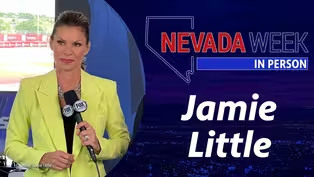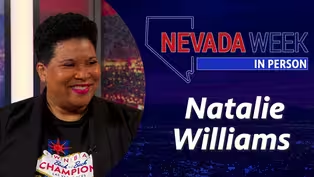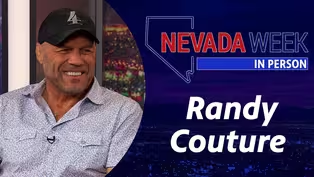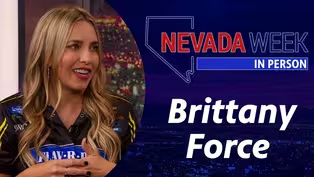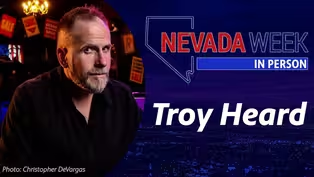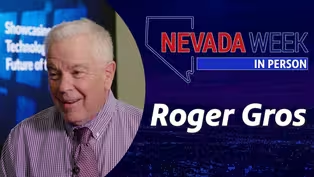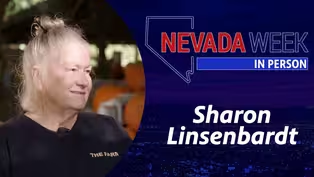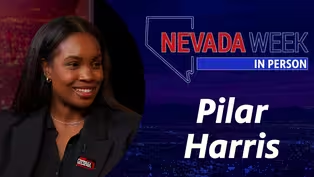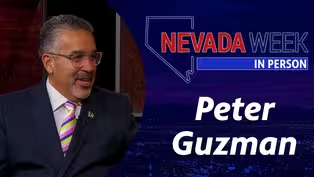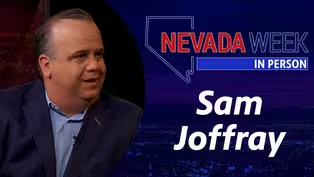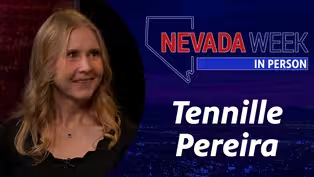
Nevada Week In Person | Fawn Douglas
Season 1 Episode 91 | 14mVideo has Closed Captions
One-on-one interview with Fawn Douglas, Artist and Activist, Nuwu Art
One-on-one interview with Fawn Douglas, Artist and Activist, Nuwu Art
Problems playing video? | Closed Captioning Feedback
Problems playing video? | Closed Captioning Feedback
Nevada Week In Person is a local public television program presented by Vegas PBS

Nevada Week In Person | Fawn Douglas
Season 1 Episode 91 | 14mVideo has Closed Captions
One-on-one interview with Fawn Douglas, Artist and Activist, Nuwu Art
Problems playing video? | Closed Captioning Feedback
How to Watch Nevada Week In Person
Nevada Week In Person is available to stream on pbs.org and the free PBS App, available on iPhone, Apple TV, Android TV, Android smartphones, Amazon Fire TV, Amazon Fire Tablet, Roku, Samsung Smart TV, and Vizio.
Providing Support for PBS.org
Learn Moreabout PBS online sponsorshipMore from This Collection
Nevada Week In Person | Jamie Little
Video has Closed Captions
One-on-one interview with Jamie Little, NASCAR Broadcaster (14m)
Nevada Week In Person | Chet Buchanan
Video has Closed Captions
One-on-one interview with Chet Buchanan,Host & Creator, 98.5 KLUC’s The Chet Buchanan Show (14m)
Nevada Week In Person | Natalie Williams
Video has Closed Captions
One-on-one interview with Natalie Williams, General Manager, Las Vegas Aces (14m)
Nevada Week In Person | Randy Couture
Video has Closed Captions
One-on-one interview with Randy Couture, UFC Hall of Famer & U.S. Army Veteran (14m)
Nevada Week In Person | Brittany Force
Video has Closed Captions
One-on-one interview with Brittany Force, World Champion Drag Racer (14m)
Nevada Week In Person | Troy Heard
Video has Closed Captions
One-on-one interview with Troy Heard, Artistic Director, Majestic Repertory Theatre (14m)
Nevada Week In Person | Roger Gros
Video has Closed Captions
One-on-one interview with Roger Gros, Publisher, Global Gaming Business Magazine (14m)
Video has Closed Captions
One-on-one interview with Sharon Linsenbardt, Owner, Las Vegas Farm and Barn Buddies Rescu (14m)
Nevada Week In Person | Pilar Harris
Video has Closed Captions
One-on-one interview with Pilar Harris (14m)
Nevada Week In Person | Peter Guzman
Video has Closed Captions
One-on-one interview with Latin Chamber of Commerce Nevada President & CEO Peter Guzman (14m)
Nevada Week In Person | Sam Joffray
Video has Closed Captions
One-on-one interview with Sam Joffray, President & CEO, Las Vegas Super Bowl LVII Host Com (14m)
Nevada Week In Person | Tennille Pereira
Video has Closed Captions
One-on-one interview with Tennille Pereira, Director, Vegas Strong Resiliency Center (14m)
Providing Support for PBS.org
Learn Moreabout PBS online sponsorshipAn artist, activist, and enrolled member of the Las Vegas Paiute Tribe, Fawn Douglas is our guest this week on Nevada Week In Person.
♪♪♪ Support for Nevada Week In Person is provided by Senator William H. Hernstadt.
-Welcome to Nevada Week In Person.
I'm Amber Renee Dixon.
She grew up in the downtown colony of the Las Vegas Paiute Tribe, received her Master of Fine Arts at UNLV, and in 2021, opened the Nuwu Art and Activism Studios in Las Vegas' historic Huntridge neighborhood.
Fawn Douglas, thank you for joining Nevada Week In Person.
(Fawn Douglas) Thank you for having me.
-So for those who don't know, the Las Vegas Paiute Tribe is a tribe of the Southern Paiute people also known as the Nuwu.
And the Las Vegas area is on Southern Paiute land.
But about the Las Vegas Paiute Tribe, what makes you most proud to be a member?
-Where do I start with that?
I am a proud member of the Las Vegas Paiute Tribe.
And just recently, over the past few years, specifically, just seeing our tribe go through so much, you know, especially with the pandemic.
Our tribal council has stood up for our people, made moves so that our people are taken care of.
We have an education committee.
We have our tribal council that I can't stop boasting about who does everything to really go over the current economic development, the future economic development of the tribe, but also maintaining that we have our culture within the tribe.
Our people meet once a month for our tribal council meetings, and we have some really strong leadership.
So I think right now, the tribal council is definitely something to be very proud of as a tribal member, because they're doing so much.
They work tirelessly every single day for our people and thinking about the future of what-- and what sovereignty means, you know, with self-governance, sovereignty in everything that they do.
And it's just really amazing to see.
It's just such strong leadership right now.
-Now, within your art, you tell the stories of indigenous people.
You want those stories to be heard in modern times.
What story would you say is most relevant right now to be told?
-Within my art, one of the-- I would have to go back to my woven works.
I did a collection of Nuwu baskets.
And with these baskets, I have taken what is in my environment, and, well-- So we were here in the city of Las Vegas, of course, before the city was here.
Our people were here and are still here.
And there's different places where we had harvested willows and other materials for basket weaving.
And you know, currently, we can go down to the Wetlands Park and, you know, gather some items for that.
But when we were building our Nuwu Art Gallery and Community Center and the adjoining buildings, the Activism Studios, there was a lot of rubble and things around, trash in the back.
And when we were clearing that out, I was taking items and repurposing them.
And so I was taking some weaving practices that our people are known for and subverting the idea of what it means to use tradition.
And so traditionally, yes, I have harvested those, the items to make those baskets within my homelands.
I had taken those items.
But they're metal.
They're conduit wire.
They're other metal pieces and other types of wires.
And so I had created these things.
And when I'm thinking about it and when I'm making these pieces, I'm thinking about my great-grandmother Topsy Swain.
And I'm thinking about her woven works that are at the Lost City Museum.
And I'm thinking-- -That's so neat.
-Thank you.
And I'm thinking about her.
I'm thinking about our people.
I'm thinking as our council members do, I'm thinking seven generations back, but also thinking ahead of what kind of materials will last into the future to be telling our stories that are happening now.
And so when I think about that, because I think we've, we've gone through a lot of trauma.
In fact, not only our people with a lot of loss, but this collective trauma over the pandemic the past few years.
And when I think about that, think about, well, what is it that makes me happy during these times?
Because I certainly have a number of works that lean into, you know, my activism and things that I've worked on in the past.
But when I'm thinking about joy as a tool of activism, presence as a tool of activism, and being able to inspire others through art, that is also activism.
-I don't associate joy and activism together.
I associate activism with struggle and strife, but that's-- you're breaking new ground, do you think?
-I feel that.
I feel that like when, especially as an artist, when we think about futurisms, we think about what is the brightest future that we can dream.
What can we do in the present to, you know, move forward and really blaze that path?
Because we've already gone through our apocalyptic-- our apocalypse, excuse me.
We, our native people, have already gone through these struggles in our paths.
But what does it mean to truly be happy?
Even, you know, I talk with my daughter because she struggles sometimes with thinking about activism in the many things that are happening within the communities and, well, around the world today.
And there's so much to really get you down, and she can't be everywhere at once.
And you know, but it's like, you know what?
You are breathing.
You are getting up in the day.
You are going to school.
You are doing something to strengthen your mind, strengthen your heart, strengthen your body to keep moving forward.
Our ancestors went through so much, went through so much pain, you know, for you to be here today-- not to struggle, not to cry.
Yes, there are sorrows.
There are things that are happening but, also, what brings you joy?
What's going to move you forward?
And that's inspiring.
She's inspiring me just seeing her just be her.
And I think that's really beautiful.
-Your introduction to activism, when was it?
What was it?
-You know, when I think about activism, I mean, I feel like that's always been ingrained in us as Southern Paiute people.
Our Southern Paiutes are a small band of people, are the ones that remained even during the times of colonization.
So when Las Vegas was established, a lot of our people were moved out.
But there was a small band that remained, and it was around 50 people.
And even today, we are 49 tribal members.
We're one of the smallest tribes in North America.
-Wow!
-And with that I think about, you know, our struggle, but I think about our resilience.
We remained.
We stayed.
And so that activism of, you know, standing your ground, that is who we are as Southern Paiute people.
And so I think I've always had that flare of activism.
It just comes with being Paiute.
And-- but when I think about activism, like actually being out there, it really came with Gold Butte.
It came with what was happening with the Gold Butte before it became a national monument and just learning about how our petroglyphs are being used as target practice, how the area was being trashed and destroyed.
I mean, there's artifacts.
The area is beautiful, and that was being destroyed.
And so I wanted to get involved with that.
And there's a number of artists in Las Vegas that were working to use their art to really drive that message, and so I got involved.
I got more involved than I thought I would, because at the time, I was learning about the place too.
I was learning about our history.
And Gold Butte is closer to the Moapa band of Paiutes, but those are also our relatives.
And I was learning from my, my uncle, Greg Anderson, who's just an amazing person, just so full of-- just a wealth of information about our histories.
I was learning about, you know, what it means to be a Southern Paiute person, to be a Southern Paiute woman and to really listen, you know, even try to take a step back and listen, listen to what the rocks are telling you, listen to what this land is, you know, how you're connecting with it, and listen to the elders too.
So I got a lot of information about just who I am as a person.
And that was really a pivotal moment in my growth for activism, especially when it comes to promoting who we are as Southern Paiute people.
-What does it mean to be a Southern Paiute woman?
-It means to struggle [laughter].
No, it's not all of that.
But to be a Southern-- but yeah.
But to be a Southern Paiute woman means to be connected to these lands because we are a part of the lands that we come from.
This is who we are.
To be a Southern Paiute person is to be connected to these lands.
I wish others had this connection, because I feel like that is the tool for allyship and for stewardship, too, because there's so many beautiful places around here.
Not just Gold Butte National Monument, as it is now, not just the Avi Kwa Ame or Red Rock Conservation Area or even the Sloan Canyon area.
They're all full of all these beautiful petroglyphs and other sights.
And if other people knew about the histories of this area and knew about the people who belong to this area, they would have this care for it.
They would have this love for it as we do.
-Speaking of creating partnerships, how are you doing that at the Nuwu Art and Activism Studios?
What are you doing there for people who, who don't know?
-Oh, thank you.
Yes, at the Nuwu Art and Activism Studios we have studios available for artists or activists.
There's a nonprofit organization there.
There's two.
Mass Liberation Project, which does amazing work in the community, they do amazing work with bailing out the moms, because, unfortunately, people of color are disproportionately incarcerated versus any other communities.
And so there's a-- that nonprofit that is there, that's doing just amazing work.
But also IndigenousAF.
IndigenousAF works to decolonize through the arts and education and also with that, focus on joy.
You know, we're looking at our, our children that are attending there and other community members that are bringing their kids.
We have arts events every Final Friday, where we bring in community, and just a moment of joy for them to learn an art, a different project, and to be with others and share some foods, share some good times and some music.
And, yeah, just to have that moment, because we are taking back our joy is what we're doing.
We're taking back being within community and to share that.
-Is that what decolonization is?
What is it for people who don't understand?
-For decolonizing?
Decolonizing means different things for different people.
Decolonizing for me means getting back to cultural ways.
Decolonizing is learning your language, learning the Southern Paiute language.
And I still trip over it because I'm trying to decolonize my tongue.
To say [speaking Paiute], it has taken me actually a really long time just to introduce myself in my Southern Paiute language.
But that's also a part of decolonizing is to, like, you know, because we speak English.
And some of our community members speak Spanish as well.
But also just to remove that and to just learn a bit, a bit more about who you are, learning about, about cultural ways, listening to the elders, respecting the elders, listening to the lands, and being more in tune with what is happening within our environment.
And currently, there's this renaissance that is happening with our Southern Paiute people where they're learning about their cultural ways.
They always have.
Let me reel that one back.
But it is more present now.
And it's really amazing to see, really amazing to see.
And over at the studios, we have-- we have space to nurture those types of things.
I mean, it wasn't even a few weeks ago, where we had artists from the Fallon Shoshone Paiute Tribe, Loretta Burden, and she was teaching a weaving workshop for a cradle board, for a cradle board cover.
And a number of our Southern Paiutes came out, and it was really beautiful to see that it was mostly youth.
It was mostly youth that wants to, you know, learn about these ways, learn about how to bend the willows, how to weave, you know, what different designs mean.
And that was really an amazing moment of decolonization to be a part of.
-Wow!
It is Native American Heritage Month.
What are your hopes for this month?
-My hopes for this month is that other people can be inspired to learn more about the Southern Paiute people.
You can go to the lvpaiutetribe.com website to learn more about the Las Vegas Paiute Tribe.
The Moapa band of Paiutes also have their website.
But also to come up to some events.
We have a number of them.
I brought my sheet here so I don't trip up on them.
-Okay.
-But, yeah, so November 3 for First Friday, of course.
We're celebrating Artist Avis Charley.
She's a part of our Nuwu Art Collective, and she's one of the artists that are in our studios.
And she's Dine and Dakota, but she does amazing ledger arts.
And she has other artwork.
She's an oil painter.
-And when is that?
-That's going to be Friday, for First Friday arts in the Arts District.
-Fawn Douglas, thank you so much for joining Nevada Week In Person.
-Thank you for having me.
♪♪♪

- News and Public Affairs

Top journalists deliver compelling original analysis of the hour's headlines.

- News and Public Affairs

FRONTLINE is investigative journalism that questions, explains and changes our world.


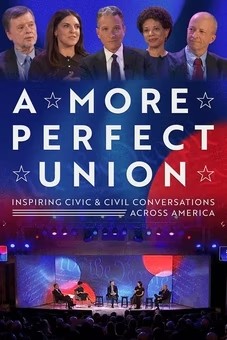

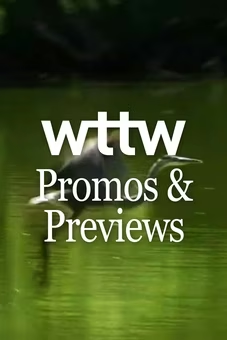







Support for PBS provided by:
Nevada Week In Person is a local public television program presented by Vegas PBS
